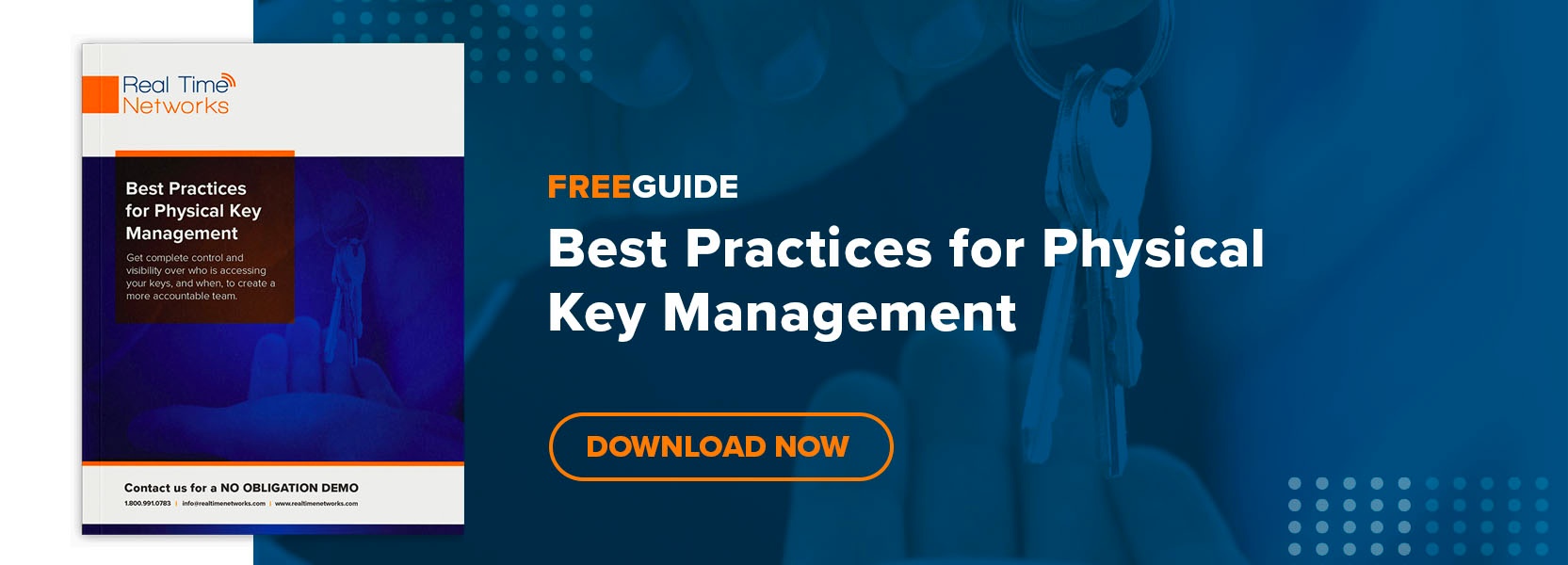By Jay Palter | June 8, 2022
Table of Contents
Some things you don’t appreciate until they’re gone. In the business world, some of the smallest, simplest, but most painful assets to lose are keys. So many of our day-to-day tasks depend on keys being available when and where we need them. All it takes is one mistake resulting in a key getting lost for someone’s entire day getting derailed.
Lost keys can cost a business dearly. Some of those costs are obvious, but if you’ve never dealt with the loss of a critical key, you may not appreciate some of the hidden costs. This article highlights ten different costs, some of them not-so-obvious, that stem from the loss of corporate keys.
The High Costs of Lost Keys
The business world may be going digital more and more every day, but physical lock and key security remains a cost-effective, reliable, and adaptable solution in most facilities. Some of these ten costs you may have already considered and written off. No big deal, right? But have you really thought about all ten different costs and their potential impact on your business?
1. Key Replacements
First, and most obviously, you need to purchase a replacement when a key is lost.
2. Rekeying Locks
The cost of rekeying regular locks can add up fast. Rekeying high-security locks requires working with specific vendors and is considerably more expensive. Fees may drop per lock if you need to re-key a larger facility, but it could still run you about $40 per lock, even at the low end. So $4,000 to re-key 100 locks if a sub-master goes missing suddenly looks more concerning.
If a master or grandmaster key goes missing, your facilities budget might be in trouble. The State of Hawaii learned this the hard way earlier this year when leadership realized they didn’t know how many master keys were in circulation. So, for security reasons, they rekeyed the entire state Capitol at the cost of over $250,000.
3. Lost Vehicle Keys
Bare metal keys are not expensive to replace, but vehicle keys are another story. Lost key fob replacements typically run $200-$400 or more, depending on the vehicle's make. And due to the labor involved in electronic fob duplication, there often aren’t price breaks if they need to be done in bulk.
4. Lost Productivity
Those are just some of the direct costs of losing keys. But often more harmful is the loss in productivity you face when missing keys shut down entire workflows that your business depends on.
It doesn’t even need to be actual lost keys. Untracked key use can lead to lost productivity when staff repeatedly waste time tracking down a misplaced key. For example, a fleet manager may think it’s good to carry the key for a specialized service truck on them just to make sure they know who is taking the truck out. Then one night, they accidentally take that key home, not realizing a second shift crew was relying on that truck to complete a critical job.
The crew wastes half an hour looking for it before calling the supervisor, who has to drive back in. Then the company pays out overtime to the second shift crew who end up staying later so the work is completed on deadline.
5. Risk
If a key is actually lost or stolen, a business is threatened with theft or vandalism until the facility is re-secured. Everything that key grants access to is at risk. That could be a vehicle, an entire motor pool, a cash box, or the entire facility and its staff. So the direct cost of rekeying a lock might only be $100, but the whole time a missing key is out there, you’re putting your personal and business at unnecessary risk.
6. Additional Work
If a lost key is a sub-master or master, the scope of work needed to clean up the situation scales rapidly along with the risk to your organization. A rekeying project takes ongoing management time, pulling staff away from other work. In addition, keys need to be distributed. And high-security areas may need guards posted while they’re unsecured. That can require overtime or contractor labor.
7. Reputational Damage
In the long term, what may be most financially damaging is what customers and the public hear. Word of a major lost key blunder will get out, which can have a severe impact on business reputation in certain industries. For example, a security breach at a private corrections facility may deter a client from awarding a new contract.
8. Lost Sales
All of the time your employees spend searching for missing keys and managing rekeying processes is time not spent on revenue-generating activities. Those lost work hours and reputational damage seen by prospective customers can lead from something as innocuous as a lost key to significant lost sales.
9. Unplanned Downtime
Unplanned downtime carries a high cost. If an important workflow requires your employees to unlock a door, use a vehicle, or access stored equipment, losing that key can stall important work for hours. Will a technician miss an important appointment if they can’t sign out a truck from your fleet? Will a customer get fed up and leave waiting for you to unlock a door? Will a highly-paid employee waste an hour waiting for someone to return with the key they need?
10. Shrinkage
As much as we don’t want to think about it, many losses occur due to internal theft. If you don’t have a reliable way to track and manage the keys that secure your inventory, you’re at risk of unnecessary shrinkage.
Eliminate Unnecessary Costs Using Better Key Management
These different types of costs can be avoided or reduced using a reliable key management program. Manual key management is not only costly, it is prone to human error. Automated, electronic key management systems are more reliable, cost-effective, and provide consistently error-free key management at all hours of the day.
These key tracking systems are just a tool, though. And tools need to be used effectively. If you’re considering using an electronic key system, you should deploy it as part of an organized key management program that you design for your workplace’s specific needs. Of course, you need to sort out details, but designing a key management program should be a straightforward process.
Here is an easy five-step process that you can adapt to design your key management program:
Inventory keys and locking assets
If you’re not key tracking, you don’t really know what is at risk. Start by conducting a complete inventory of locked assets and keys in your facility. Typically, it is easier to start by inventorying the doors, storage cabinets, and vehicles first and then work backward to determine where their respective keys are.
Record all of these items in a master key inventory. You’ll bring them under central control in a later step.
Determine who needs access
Now that you have a complete inventory, decide which individuals, teams, or departments need access to each key. If you’re going to use an electronic key management system, you can specify conditional access, such as limited to a particular time of day. Note those restrictions here.
As a general rule of thumb, people should have the least access to keys possible. That is called the ‘principle of least privilege.’ If they don’t need access to a key daily, they should only be able to get it through a controlled exception handling process.
Determine how and where to distribute keys
Now that you know which keys you have and who needs access, you need to determine where your distribution points will be next. If you’re going to use automated key lockers, you don’t necessarily need to select a staffed location around the clock. Instead, you can distribute key lockers around your worksite close to where they’re needed most.
Decide which technology you need to enforce your key management program
Now that you know the scope of your key distribution needs, you can identify the tools you need to manage the process. For low security and low management environments, you might be able to get away with a simple lockbox and paper sign-out form. But for most workplaces that care about key security, you’ll want something more rigorous, like an electronic key management system.
Document your key control policies
With your tools and key inventory in place, the last step is to craft a key management policy to define responsibilities. Document what every individual must do when signing out or returning a key. Document what needs to happen when they report lost keys. Also include provisions for handling exceptions, like one-time access, or access for temporary employees, like contractors.
Electronic Key Management Systems Eliminate Hidden Costs
A key management system does more than just secure keys. It eliminates the unnecessary, hidden costs of key loss and streamlines your day-to-day operations. If one of your business processes uses a key, there is a good chance a key management system can improve that work.
Subscribe to our blog

Jay Palter
Vice President of Marketing & Partnerships





